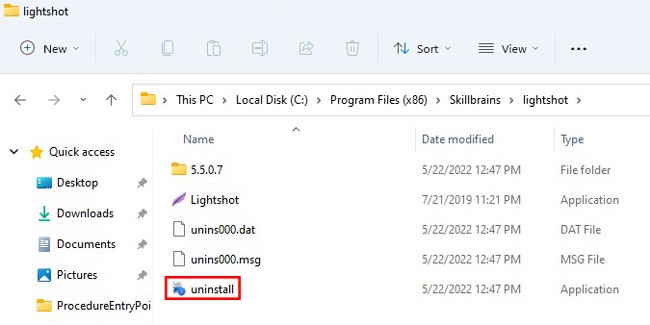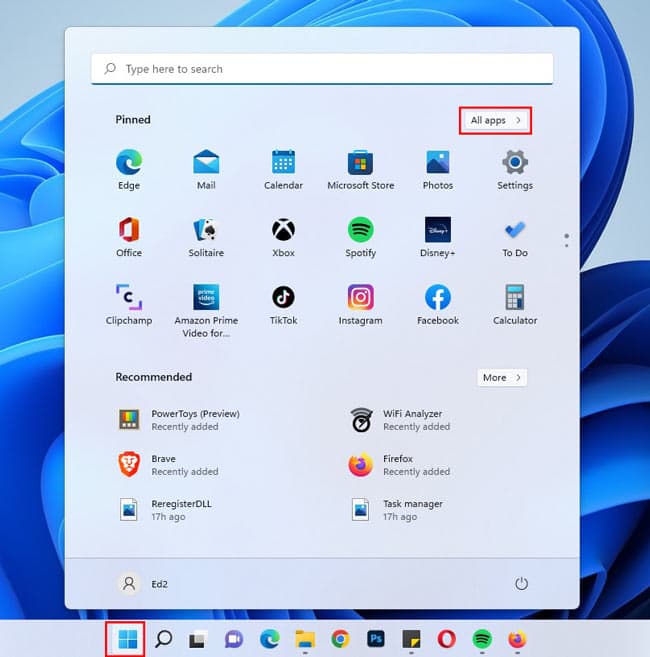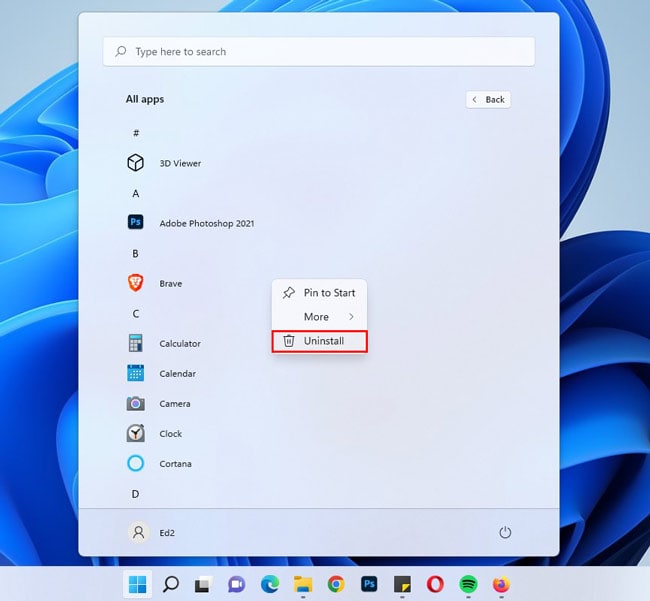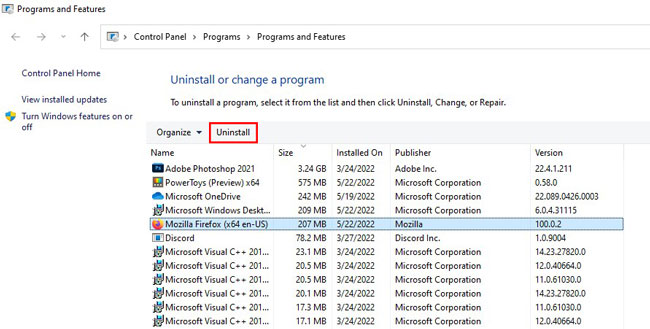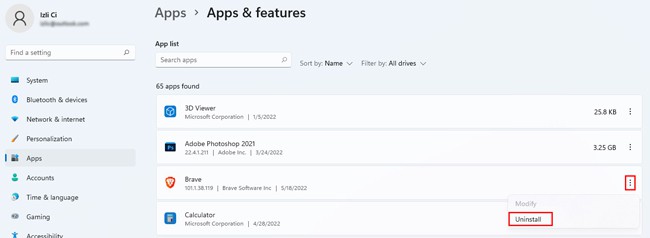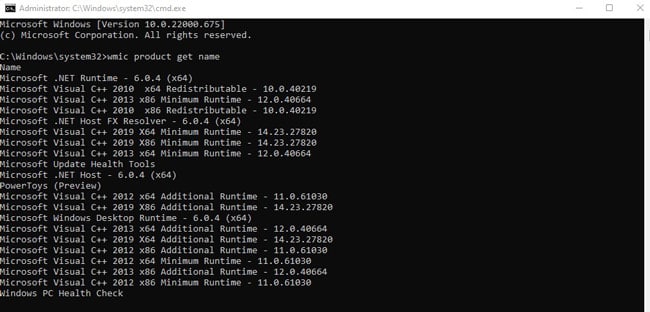We’ve listed various methods to uninstall apps on Windows 11 below. You can choose your preferred approach as the end result will be the same.
Using the Uninstaller
Developers usually include an uninstall.exe file along with everything else that is extracted when you install an application. The purpose of this uninstaller file is to, you guessed it, uninstall the application. Here are the steps to run the uninstaller:
From the Start Menu
You can customize the start menu, easily access your installed applications, as well as remove the ones you don’t want with the click of a button. Here’s how to uninstall apps on Windows 11 via the Start Menu:
Using the Control Panel
The Control Panel is mainly used to check and modify system settings. One of its many features is to remove or modify programs, and here’s how you can do the same:
Via the Settings App
The Settings app has received a lot of improvements in Windows 11, and the UI has changed. But one thing that has remained consistent with Windows 10 is that you can still remove unwanted apps and features. Here are the steps to do so:
From the Command-Line
We recommend using the methods listed above as they will easily get the job done. But if you’d prefer to take the CLI approach anyway, there are a couple of ways to go about it.
Using Remove-AppxPackage Cmdlet
We’ve instructed how to use this cmdlet for its core function below. But if you’d like to preserve the application data after uninstalling it, or you’re trying to uninstall an app on a specific user account only, or some other advanced task, you should refer to Microsoft’s documentation. With that said, here’s how to uninstall apps on Windows 11 using this cmdlet:
Using WMIC Utility
You can also use the WMIC utility, but this method only allows you to remove programs that are registered in WMI, so your options will likely be limited. Regardless, here’s how to uninstall apps on Windows 11 via WMIC:
Third-Party Uninstaller
You might have a hard time when uninstalling certain applications. Even after uninstalling an application, residual data will sometimes be left behind in the registry. And finally, there’s also the matter of convenience. We recommend uninstalling apps using the methods listed in our guide, but in the cases mentioned directly above, a third-party uninstaller tool can be a good option. Some reputable ones currently available include Revo Uninstaller and CCleaner.
